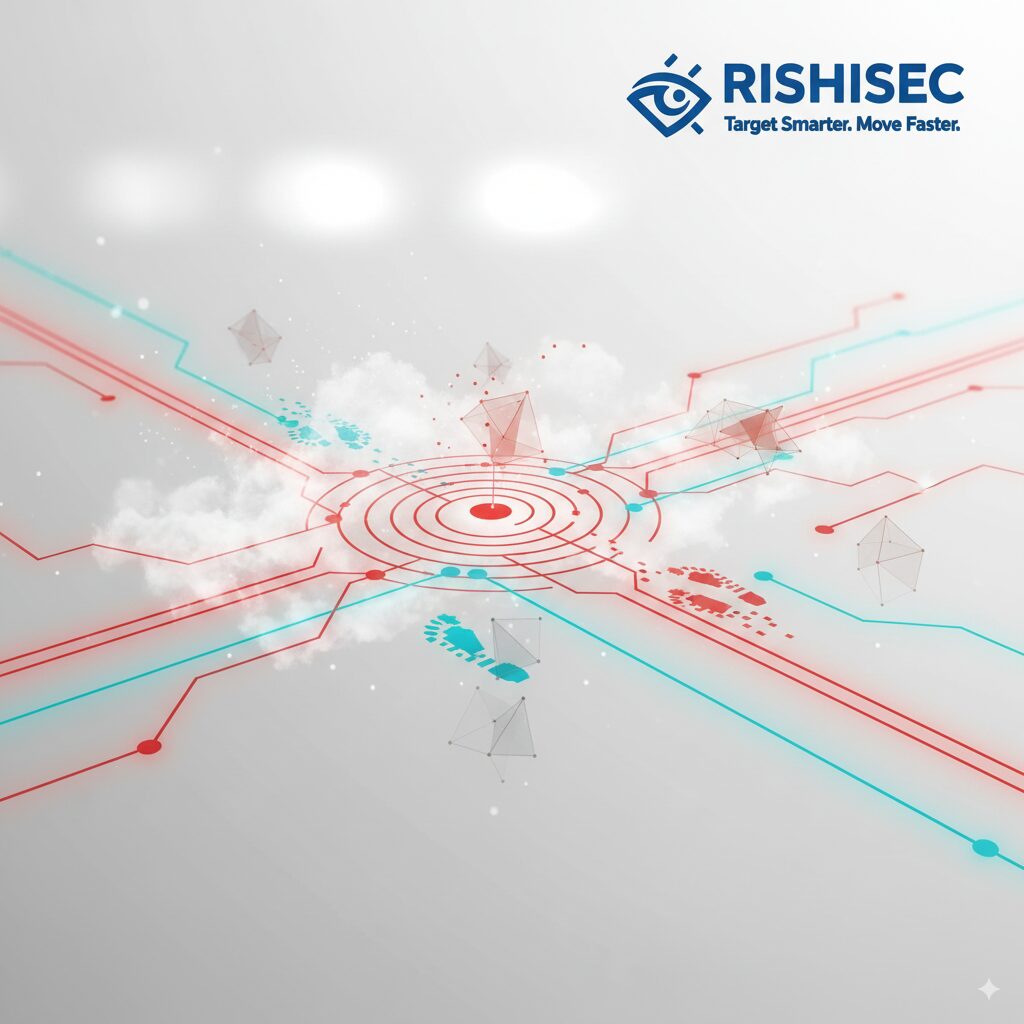When Officer Sarah Martinez responded to a domestic violence call last Tuesday, she had no idea her department’s Computer-Aided Dispatch (CAD) system would crash mid-response. For twenty-three critical minutes, officers across the city operated without real-time intelligence, backup information, or coordinated dispatch support. The incident ended safely, but it highlighted a growing vulnerability in modern law enforcement: our increasing dependence on operational systems that aren’t built for failure.
Police OSINT has become integral to law enforcement operations, supporting everything from routine patrol decisions to complex investigations. However, as agencies become more reliant on digital intelligence systems, the consequences of system failures multiply exponentially. This creates an urgent need for resilient operational frameworks that ensure continuity when technology fails.
Modern law enforcement depends on interconnected systems that collect, process, and distribute intelligence in real-time. When these systems experience downtime, officers lose access to critical information including suspect histories, active warrants, ongoing investigations, and real-time threat assessments. The impact extends beyond individual cases to affect entire community safety operations.

Critical Vulnerabilities in Police Operational Systems
Law enforcement agencies face unique challenges in maintaining system reliability due to budget constraints, legacy technology, and the 24/7 nature of police operations. Understanding these vulnerabilities is essential for building effective resilience strategies.
Single Points of Failure in Critical Infrastructure
Many police departments operate with centralized systems that create dangerous single points of failure. When the primary CAD server goes down, dispatch operations can halt entirely. Similarly, Records Management System (RMS) failures prevent officers from accessing vital background information during investigations.
Network connectivity represents another critical vulnerability. Departments that rely on a single internet service provider face complete system isolation during outages. Furthermore, power infrastructure failures can cascade through multiple systems simultaneously, creating compound emergencies.
Cloud dependencies introduce additional risks that agencies must carefully manage. While cloud services offer scalability and cost benefits, they also create reliance on third-party providers whose outages can affect multiple agencies simultaneously.
Legacy Technology and Integration Challenges
Many police departments still operate systems installed decades ago, often running on outdated operating systems with limited support options. These legacy platforms struggle to integrate with modern police OSINT tools, creating information silos that reduce operational effectiveness.
Integration challenges compound when agencies attempt to connect systems from different vendors. Data format incompatibilities, authentication conflicts, and communication protocol mismatches can create system instabilities that increase failure risks.
Additionally, legacy systems often lack modern security features, making them vulnerable to cyber attacks that can cause both security breaches and operational disruptions.

Real-World System Failures and Their Impact
System failures in law enforcement have real consequences that extend far beyond inconvenience. Examining actual incidents provides crucial insights into vulnerabilities and the importance of robust resilience planning.
Case Study: Regional Communication System Outage
In 2023, a major metropolitan area experienced a complete radio and CAD system failure during peak evening hours. The outage affected twelve law enforcement agencies simultaneously, leaving officers without dispatch support for over four hours.
Officers reverted to cell phones and personal radios for coordination, but the lack of centralized dispatch created dangerous gaps in situational awareness. Response times increased by an average of 18 minutes, and several high-priority calls experienced delayed responses that could have had tragic consequences.
The incident revealed critical flaws in backup procedures and highlighted the importance of redundant communication systems. It also demonstrated how system failures can cascade across multiple agencies in interconnected regions.
Cyber Attack on Municipal Systems
Another significant incident involved ransomware that targeted a city’s entire IT infrastructure, including police systems. The attack encrypted CAD data, RMS records, and police OSINT databases, effectively shutting down digital operations for nearly two weeks.
Officers had to conduct investigations using paper forms and manual processes, significantly reducing their effectiveness. The department lost access to years of case files, suspect databases, and intelligence reports stored in their systems.
Recovery costs exceeded $2.3 million, not including the immeasurable impact on ongoing investigations and community safety. The incident underscored the critical importance of cybersecurity in operational resilience.
Strategic Approaches to Police OSINT System Resilience
Building resilient police operational systems requires comprehensive strategies that address technology, processes, and human factors. Successful approaches combine redundancy, monitoring, and rapid recovery capabilities.
Implementing Redundant Systems and Backup Procedures
Effective resilience starts with eliminating single points of failure through strategic redundancy. This includes backup servers, alternate communication channels, and redundant network connections that activate automatically during primary system failures.
Geographic distribution of critical systems provides additional protection against localized disasters. Cloud-based backup systems can maintain operations even when primary facilities are compromised, though agencies must carefully evaluate security and compliance requirements.
Manual backup procedures remain essential despite technological advances. Officers need training and tools to maintain basic operations using paper forms, alternative communication methods, and offline databases when digital systems fail.
Advanced platforms like Kindi incorporate resilience features that maintain operational continuity during system disruptions. These tools provide offline capabilities and automatic failover mechanisms that minimize disruption during outages.
Proactive Monitoring and Predictive Maintenance
Modern police OSINT systems should include comprehensive monitoring that tracks system performance, identifies potential failures before they occur, and provides early warning of developing problems.
Predictive analytics can analyze system logs, performance metrics, and usage patterns to identify equipment that may fail soon. This enables proactive replacement and maintenance that prevents unexpected outages.
Network monitoring tools track bandwidth utilization, latency, and connection stability to identify connectivity issues before they impact operations. Similarly, server monitoring provides insights into CPU usage, memory consumption, and storage capacity trends.

Cybersecurity and Threat Management for Law Enforcement Systems
Police systems face unique cybersecurity challenges due to their high-profile nature, sensitive data, and operational criticality. Effective cyber risk management is essential for maintaining system resilience.
Access Control and Authentication Systems
Robust access control prevents both external attacks and internal security breaches that can compromise system availability. Multi-factor authentication, role-based permissions, and regular access reviews help maintain security while enabling operational efficiency.
Zero-trust security models assume that no user or device should be trusted by default, requiring verification for every access request. This approach provides better protection against advanced persistent threats that could disrupt operations.
Regular security audits identify vulnerabilities before attackers can exploit them. Penetration testing, vulnerability assessments, and security configuration reviews help agencies maintain strong defensive postures.
Agencies conducting criminal network investigations must balance security with operational needs, ensuring that protective measures don’t impede critical law enforcement activities.
Incident Response and Recovery Planning
Despite best efforts, security incidents will occur. Effective incident response plans minimize impact and ensure rapid recovery of critical operations.
Response plans should include clear communication protocols, defined roles and responsibilities, and step-by-step recovery procedures. Regular testing through tabletop exercises and simulated incidents helps identify gaps and improve response effectiveness.
Recovery time objectives (RTO) and recovery point objectives (RPO) establish clear expectations for system restoration. Critical police systems typically require RTOs measured in minutes rather than hours or days.
Enhancing Interoperability and Regional Collaboration
Modern law enforcement increasingly requires coordination across multiple agencies and jurisdictions. System resilience must account for interoperability needs while maintaining security and operational effectiveness.
Standardized Communication Protocols
Regional coordination requires standardized data formats, communication protocols, and system interfaces that enable seamless information sharing between agencies. This standardization also supports mutual aid during emergencies and system failures.
Common technical standards reduce integration complexity and improve system reliability. When agencies use compatible systems, they can more easily share resources and provide backup support during outages.
Emergency communication systems should maintain interoperability even during primary system failures. This requires backup radio systems, alternative data networks, and standardized emergency procedures.
Shared Resources and Mutual Aid Agreements
Regional partnerships can provide resilience through shared backup systems, mutual aid agreements, and collaborative response protocols. When one agency experiences system failures, partners can provide temporary support and resources.
Cloud-based shared services offer cost-effective redundancy while maintaining local control over sensitive operations. Regional consortiums can fund and manage shared infrastructure that individual agencies couldn’t afford independently.
Cross-training programs ensure that personnel from partner agencies can operate different systems during emergencies. This human redundancy complements technical backup systems.
Technology Solutions for Operational Continuity
Modern police OSINT platforms must incorporate resilience features that maintain operations during various failure scenarios. The most effective solutions combine automation, redundancy, and user-friendly failover mechanisms.
| Resilience Feature | Primary Benefit | Implementation Considerations |
|---|---|---|
| Automatic Failover | Seamless transition to backup systems | Requires redundant infrastructure and monitoring |
| Offline Capabilities | Continued operation without network connectivity | Data synchronization and security challenges |
| Load Balancing | Distributed processing prevents overload | Complex configuration and monitoring requirements |
| Data Replication | Real-time backup prevents data loss | Bandwidth and storage cost considerations |
Mobile and Portable Solutions
Mobile police OSINT capabilities ensure that officers maintain access to critical intelligence even when fixed infrastructure fails. Tablet and smartphone applications can provide essential functionality during system outages.
Portable command posts equipped with satellite communication, backup power systems, and mobile servers can restore critical operations during major incidents or disasters.
Edge computing solutions process data locally, reducing dependence on centralized systems and maintaining functionality during network disruptions.
Cloud Integration and Hybrid Architectures
Hybrid cloud architectures combine on-premises control with cloud scalability and redundancy. This approach enables agencies to maintain sensitive operations locally while leveraging cloud resources for backup and disaster recovery.
Multi-cloud strategies prevent vendor lock-in and provide additional resilience through geographic distribution of resources. However, they require careful management of data security and compliance requirements.
Cloud-based police OSINT tools offer inherent resilience through provider-managed redundancy and automatic scaling. Agencies must evaluate these benefits against data sovereignty and security considerations.
Implementation Roadmap for Resilient Police Systems
Building resilient police OSINT systems requires systematic planning, phased implementation, and continuous improvement. Successful projects follow proven methodologies while adapting to specific agency needs and constraints.
Assessment and Planning Phase
Begin with comprehensive risk assessments that identify vulnerabilities, critical dependencies, and potential failure scenarios. This analysis should include both technical and operational perspectives.
Business impact analysis quantifies the costs of system downtime, including operational disruption, officer safety risks, and community impact. This analysis justifies investment in resilience measures and guides priority setting.
Stakeholder engagement ensures that resilience plans address real operational needs. Input from dispatchers, patrol officers, investigators, and command staff helps identify critical requirements and potential implementation challenges.
Phased Implementation Strategy
Start with high-impact, low-cost improvements that provide immediate benefits while building support for larger investments. This might include backup communication procedures, emergency contact lists, and basic redundancy measures.
Pilot programs allow agencies to test resilience measures on a small scale before full deployment. These pilots provide valuable learning opportunities and help refine implementation approaches.
Gradual rollout minimizes disruption while building organizational capability and confidence. Each phase should include training, testing, and refinement before proceeding to the next level.
Organizations implementing automated OSINT systems must consider resilience from the initial design phase, as complexity increases both capability and vulnerability.
Measuring Success and Continuous Improvement
Effective resilience programs require ongoing measurement, evaluation, and improvement. Success metrics should capture both technical performance and operational effectiveness.
Key Performance Indicators
System availability metrics track uptime percentages, mean time between failures (MTBF), and mean time to recovery (MTTR). These technical measures provide baseline performance indicators and identify improvement trends.
Operational metrics include response time impacts during outages, officer productivity during system failures, and case closure rates during recovery periods. These measures connect technical performance to real-world outcomes.
User satisfaction surveys capture the human impact of system failures and the effectiveness of backup procedures. Officer feedback offers valuable insights into practical challenges and opportunities for improvement.
Regular Testing and Exercises
Disaster recovery exercises test both technical systems and human procedures under controlled conditions. These exercises identify gaps, validate procedures, and build organizational confidence in backup systems.
Tabletop exercises involve key personnel in discussion-based scenarios that explore decision-making processes during various failure modes. These exercises are less disruptive than full-scale tests but provide valuable learning opportunities.
Red team exercises simulate adversarial attacks on police systems, testing both cybersecurity defenses and incident response procedures. These exercises reveal vulnerabilities that might not emerge during routine testing.
Building Tomorrow’s Resilient Police Operations
The future of law enforcement depends on reliable, resilient systems that can maintain operations under any conditions. As police OSINT capabilities continue to evolve, agencies must prioritize resilience as a core requirement rather than an afterthought.
Successful resilience programs require commitment from leadership, investment in appropriate technology, and ongoing attention to emerging threats and vulnerabilities. They also require cultural changes that prioritize preparedness and continuous improvement.
The agencies that invest in resilience today will be better positioned to serve their communities tomorrow. When systems fail – and they will fail – prepared agencies will maintain operations while others struggle to respond effectively.
Building resilient police OSINT systems isn’t just about technology; it’s about ensuring that law enforcement can fulfill its mission to protect and serve communities regardless of the challenges they face.
Want to strengthen your OSINT skills and system resilience capabilities? Check out our OSINT courses for practical, hands-on training. Additionally, explore Kindi to discover how AI-powered OSINT platforms can enhance your operational resilience while maintaining the reliability your agency needs.
FAQ
What are the most critical systems that police departments need to keep operational?
The most critical systems include Computer-Aided Dispatch (CAD), Records Management Systems (RMS), communication networks, and databases containing warrant information, criminal histories, and ongoing investigation data. These systems directly impact officer safety and operational effectiveness.
How long should police systems be able to operate during outages?
Critical police systems should maintain basic functionality for at least 24-48 hours during power or network outages. Communications systems require even shorter recovery times, typically measured in minutes rather than hours, due to their direct impact on emergency response.
What backup procedures should agencies implement for system failures?
Agencies should maintain manual dispatch procedures, alternative communication methods (backup radios, cell phones), offline access to critical databases, and paper-based incident reporting systems. Regular training ensures personnel can execute these procedures effectively during emergencies.
How much should agencies budget for system resilience improvements?
Industry standards suggest allocating 10-15% of IT budgets to resilience and disaster recovery measures. However, the specific amount depends on current system vulnerabilities, criticality of operations, and risk tolerance. A comprehensive risk assessment helps determine appropriate investment levels.
What role does cybersecurity play in operational resilience?
Cybersecurity is fundamental to operational resilience, as cyber attacks are among the most common causes of system downtime in law enforcement. Effective cybersecurity measures prevent attacks that could disrupt operations, while incident response plans ensure rapid recovery when attacks succeed.




